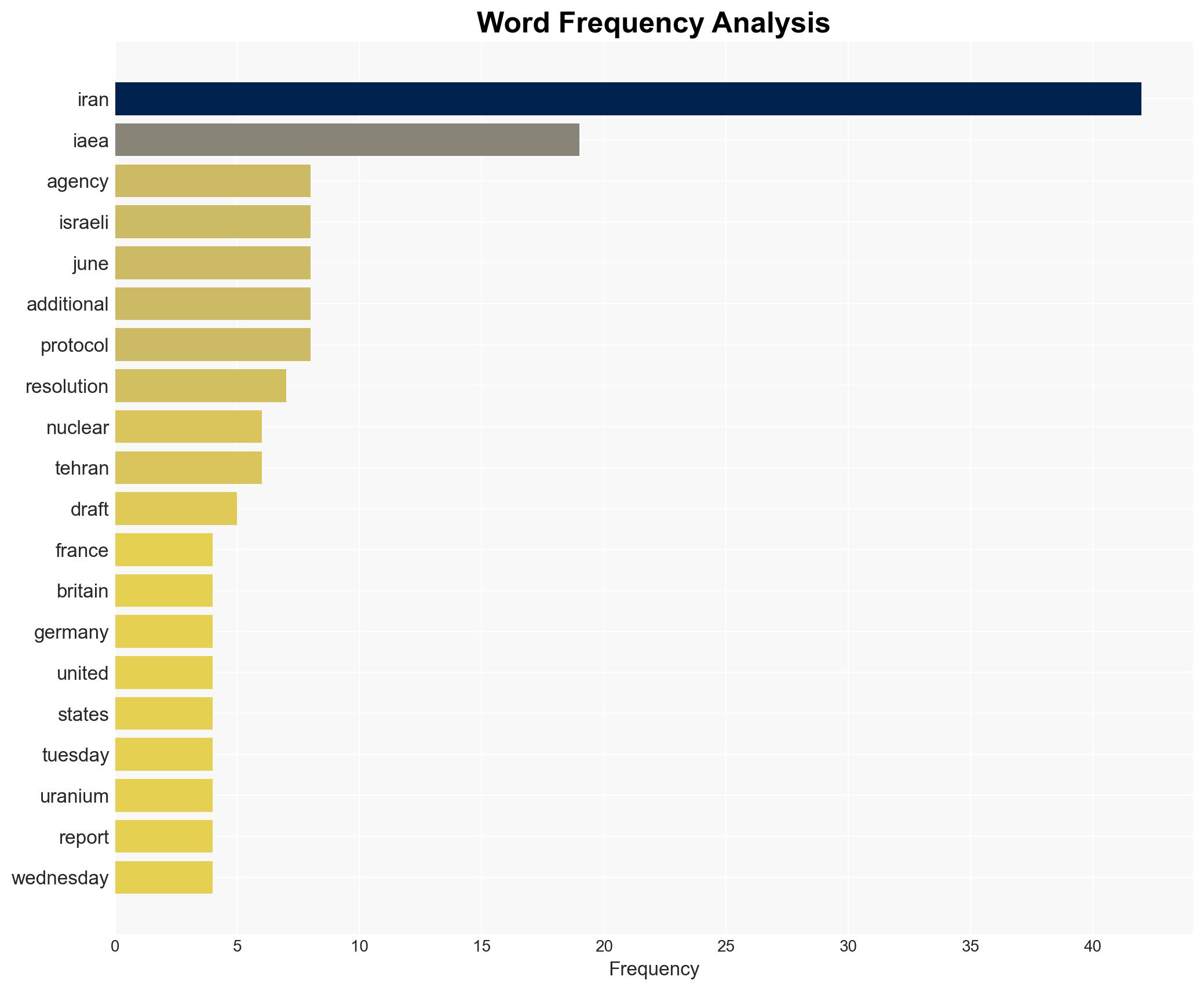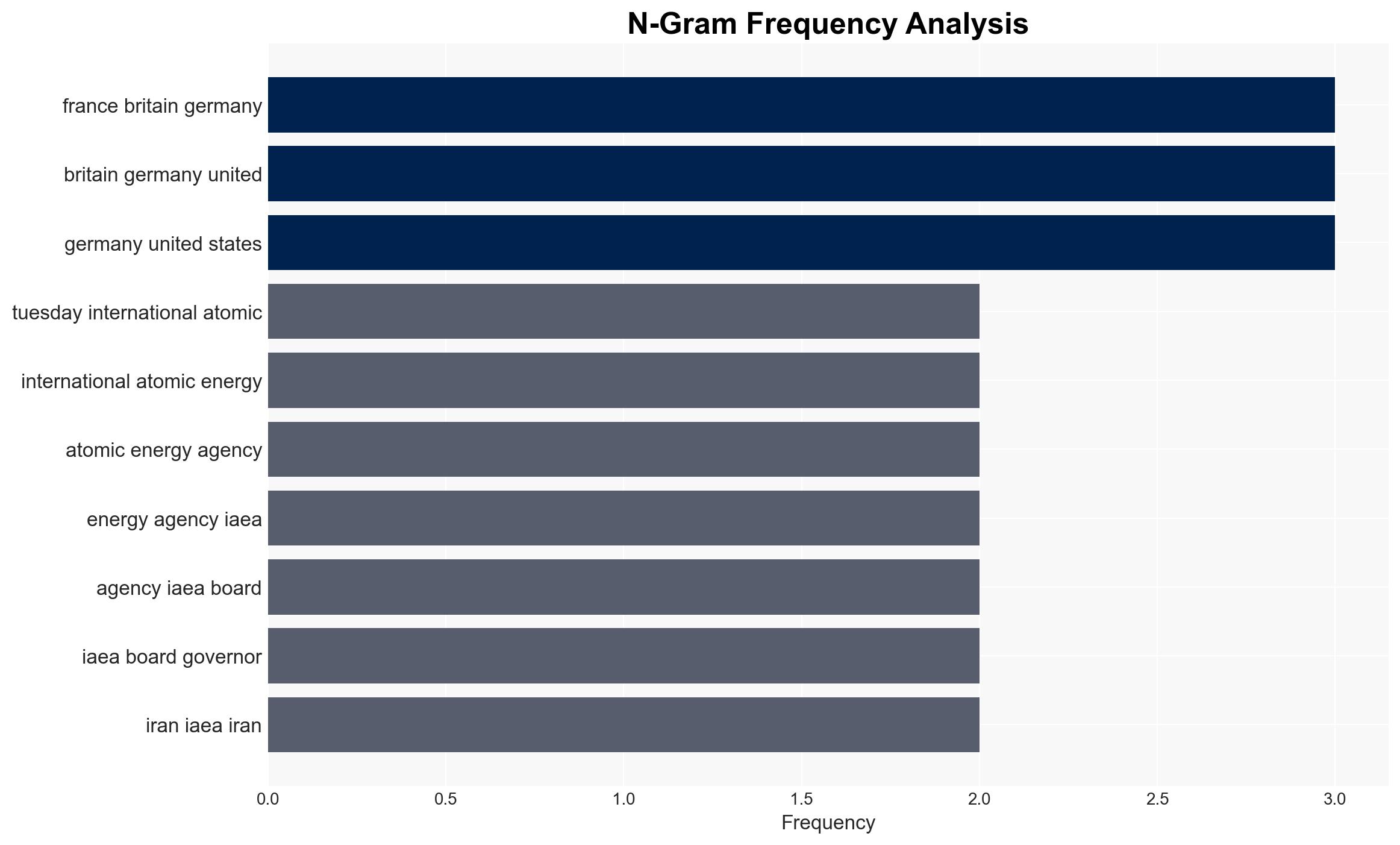IAEA resolution targets Iran over uranium stockpile and site access – Israelnationalnews.com
Published on: 2025-11-19
AI-powered OSINT brief from verified open sources. Automated NLP signal extraction with human verification. See our Methodology and Why WorldWideWatchers.
Intelligence Report: IAEA Resolution Targeting Iran
1. BLUF (Bottom Line Up Front)
There is a moderate confidence level that the IAEA resolution will increase diplomatic pressure on Iran, potentially leading to either compliance with international nuclear standards or further defiance and regional tension. The most supported hypothesis is that Iran will initially resist the resolution but may eventually comply to avoid further sanctions. Recommended action includes diplomatic engagement and readiness for escalation management.
2. Competing Hypotheses
Hypothesis 1: Iran will comply with the IAEA resolution to avoid further international isolation and economic sanctions. This is supported by Iran’s historical pattern of negotiation under pressure and its economic vulnerabilities.
Hypothesis 2: Iran will resist the resolution, viewing it as an infringement on its sovereignty, potentially escalating tensions in the region. This is supported by Iran’s past defiance in similar situations and its strategic interest in maintaining nuclear capabilities.
The first hypothesis is more likely due to Iran’s current economic challenges and the potential for increased sanctions to exacerbate domestic unrest.
3. Key Assumptions and Red Flags
Assumptions: It is assumed that the international community, particularly the EU and the US, will maintain a unified stance on enforcing the resolution. It is also assumed that Iran values economic stability over nuclear advancement.
Red Flags: Any indication of Iran accelerating its nuclear program or withdrawing from international agreements would signal increased defiance. Additionally, any fractures in the international coalition could undermine the resolution’s effectiveness.
4. Implications and Strategic Risks
The resolution could lead to increased diplomatic isolation for Iran, potentially destabilizing the region if Iran chooses to retaliate through proxy conflicts or cyber operations. Economically, further sanctions could strain Iran’s economy, leading to internal unrest. Politically, failure to enforce the resolution could weaken international non-proliferation norms.
5. Recommendations and Outlook
- Engage in diplomatic efforts to encourage Iran’s compliance, emphasizing economic incentives and regional security benefits.
- Prepare for potential escalation by enhancing regional security cooperation and intelligence sharing.
- Best-case scenario: Iran complies with the resolution, leading to a de-escalation of tensions and potential renegotiation of the nuclear deal.
- Worst-case scenario: Iran accelerates its nuclear program, leading to military confrontations and regional instability.
- Most-likely scenario: Iran initially resists but eventually complies under diplomatic and economic pressure.
6. Key Individuals and Entities
Individuals: Iranian President Ebrahim Raisi, IAEA Director General Rafael Grossi.
Entities: International Atomic Energy Agency (IAEA), United Nations Security Council, Iranian Atomic Energy Organization.
7. Thematic Tags
Regional Focus, Regional Focus: Middle East, Nuclear Non-Proliferation, International Diplomacy
Structured Analytic Techniques Applied
- Causal Layered Analysis (CLA): Analyze events across surface happenings, systems, worldviews, and myths.
- Cross-Impact Simulation: Model ripple effects across neighboring states, conflicts, or economic dependencies.
- Scenario Generation: Explore divergent futures under varying assumptions to identify plausible paths.
Explore more:
Regional Focus Briefs ·
Daily Summary ·
Support us





